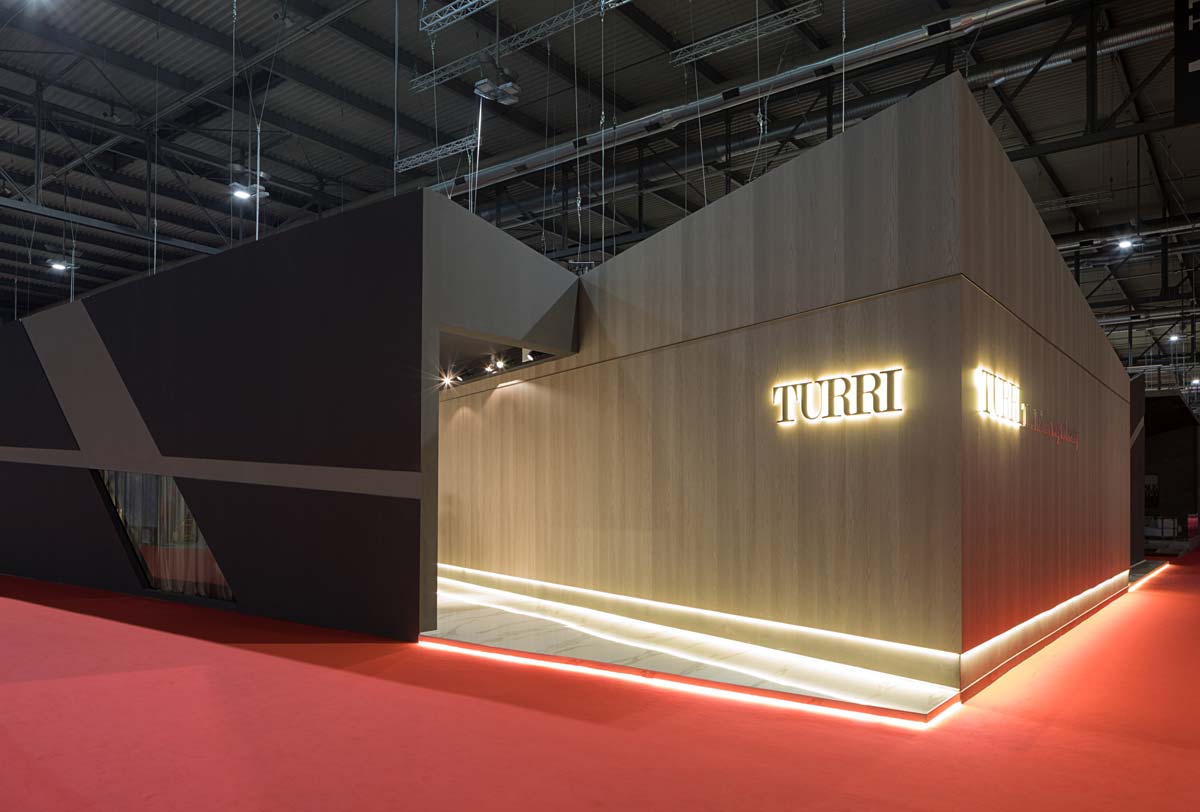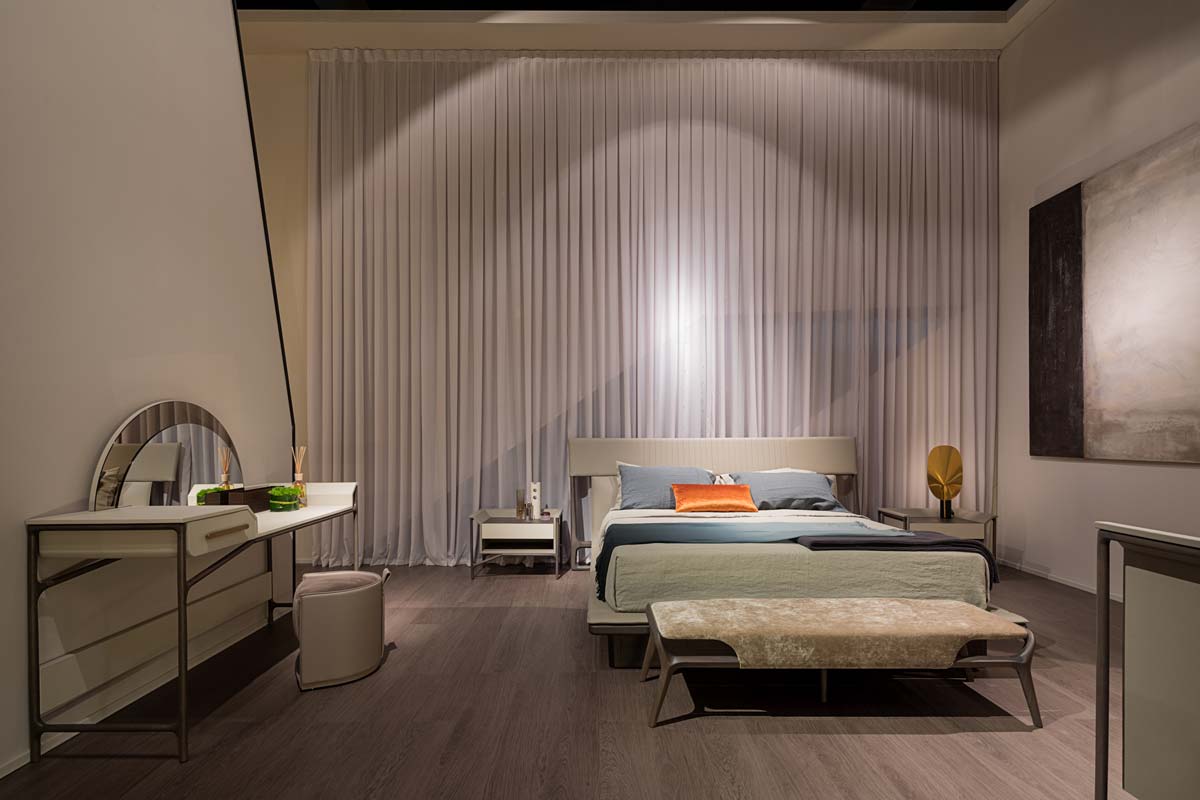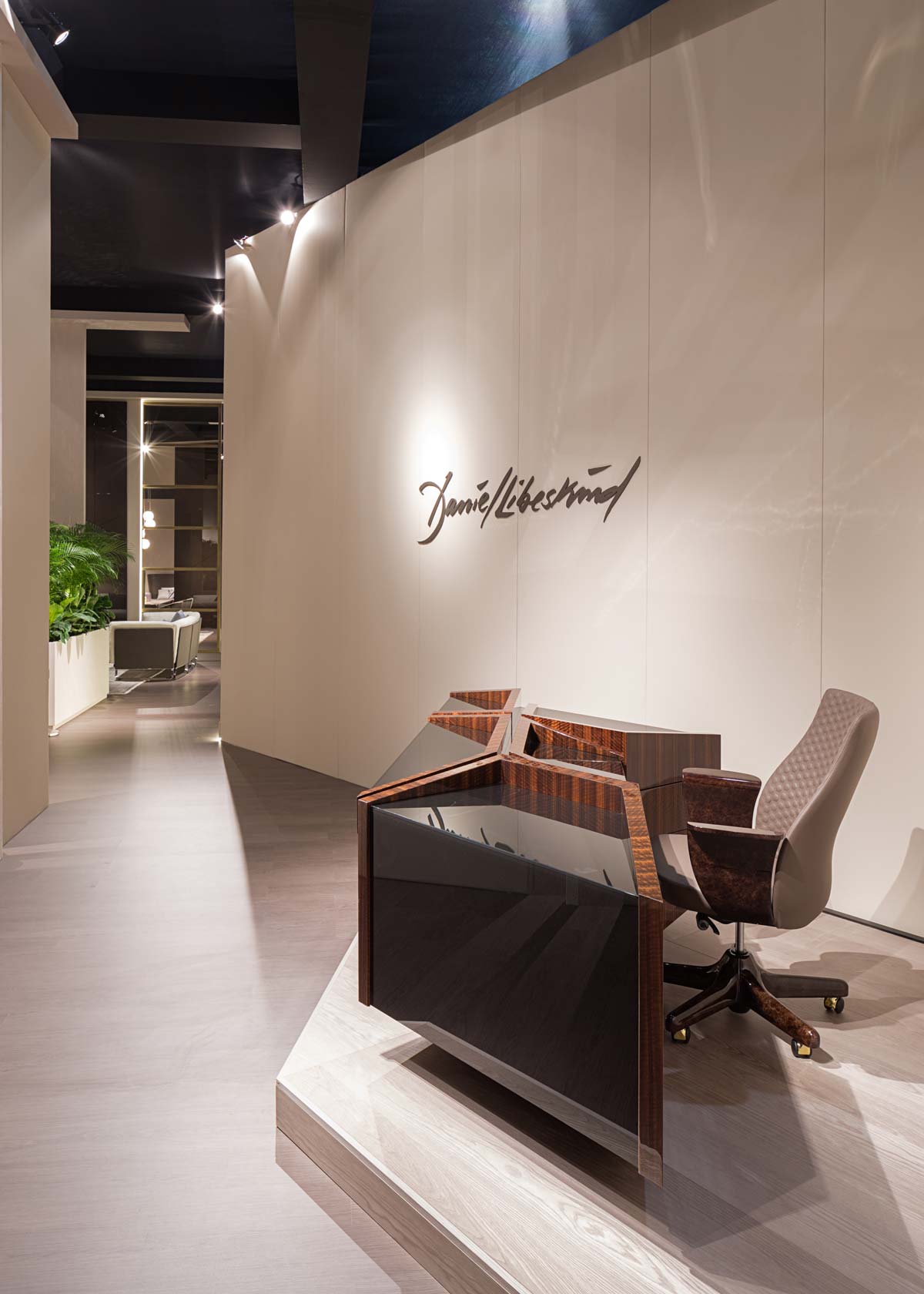The recent modernization strategy coordinated by Andrea Turri made use of all of the company’s assets: a recently updated logo, reinterpreted to put more emphasis on the name and accompanied by the slogan ‘The Italian way to beauty’, which specifically declares the company’s mission, and the flagship store on Via Borgospesso in Milano, completely redesigned by Andrea Bonini based on a concept borrowed from fashion boutiques and art galleries and a display that not only highlights the collections but, above all, the more contemporary identity of this Made in Italy company and its products.

A profound change that in no way undermines Turri’s long standing commitment to Italian excellence, begun in 1925, and which now capitalises experience in order to go in new directions, as in its collaboration with Daniel Libeskind, who designed the recently introduced office desk ‘Edge’ and the company’s architectural exhibition space at the Salone del Mobile, or its partnership with Andrea Bonini who established the company’s new course in terms of the decidedly more modern design of its furniture, like, for example, the latest collection ‘Zero’, as he explained to us when we talked to him.

Zero in name and practice for the new collection?
Yes, it is the culmination of a journey begun with the company five years ago with a line that introduced the first change. Every year, each collection has transformed a little bit more, finally arriving at a new collection called Zero, which shows that we’ve changed and that we’re starting over from nothing, sophisticated and balanced. The decorative elements are gone. Now detail itself becomes the decoration, for example with a geometric design. With new materials and formal simplicity, our primary inspiration comes from the worlds of Chinese and Japanese architecture and design. And, like we did with the other collections, I also included some styles that recall Italian masters of design like Carlo Scarpa and Vittoriano Viganò. Everything is “over” designed. It’s not the furniture that’s designed, but rather the details of the furniture. Then comes everything else.
So you began with simple architectural lines to create a signature style?
The entire range has an architectural design. It’s a new contemporary luxury style, minimalist yet rich in details, craftsmanship, and complex technical features. That’s what the market is asking for. Furthermore, it’s all sartorial, in the materials, the colours, the dimensions, and the shapes, also because as a company Turri is the right size. It has industry numbers but maintains its artisan approach with an entirely internal manufacturing process.

Every collection, not just Zero but also Milano by SBGA | Blengini Ghirardelli, and Vine by Frank Jiang, create a Turri ‘world’, offering complete environments and not just furniture.
We offer clients a total living package, always subdivided into complete living room, dining room, and bedroom environments, and including accessories like carpets, objects, and fabrics, all with the Turri label and all produced internally. The company’s manufacturing is, in fact, divided into specialised leather, carpentry, polishing, and metalworking sectors. Some collections also include an office area, and this year we had the honour of working with Daniel Libeskind who designed the Edge desk for us.
How did you begin working with the company?
Andrea Turri believed in me, even though at 33 years old I was only just at the beginning of my professional career, and it was a challenge for both of us. Fortunately the first collection that I designed became a best seller and from there we began working together. Now I’ve designed five complete collections, from upholstered furniture to lamps and from carpentry to rugs and decorative objects.
We did a great deal of research into the materials, using unique and precious marbles, high quality fabrics, special lacquers in new colours, and metals with both light and dark finishes, like a sort of satiny nickel, neither gold nor steel.







